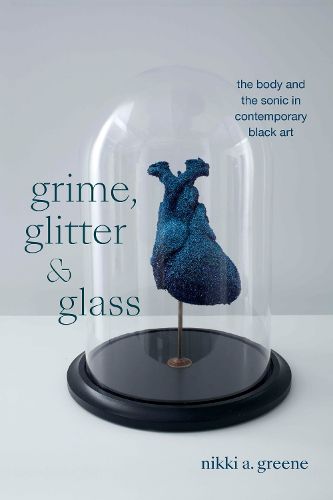Readings Newsletter
Become a Readings Member to make your shopping experience even easier.
Sign in or sign up for free!
You’re not far away from qualifying for FREE standard shipping within Australia
You’ve qualified for FREE standard shipping within Australia
The cart is loading…






In Grime, Glitter, and Glass, Nikki A. Greene examines how contemporary Black visual artists use sonic elements to refigure the formal and philosophical developments of Black art and culture. Focusing on the multimedia art of Renee Stout, Radcliffe Bailey, and Maria Magdalena Campos-Pons, Greene traces the intersection of the visual's sonic possibilities with the Black body's physical, representational, and metaphorical use in art. She employs her concept of "visual aesthetic musicality" to interpret Black visual art by examining the musical genres of jazz and rap, along with the often-overlooked innovations of funk and rumba, within art historiography. From Bailey's use of multilayered surfaces of glitter, mud, and recycled materials to meditate on Sun Ra's Afrofuturism to Stout's life-size cast of her own body that recalls funk musician Betty Davis to Campos-Pons's performative and sculptural references to sugar that resonate with the legacy of Celia Cruz, Greene outlines how these artists use mediums such as molded glass sculptures, viscous wet plaster, and dazzling mannequin heads to enhance the manifestations of Black identity. By foregrounding the sonic elements of their work, Greene demonstrates that these artists use sound to make themselves legible, recognizable, and audible.
$9.00 standard shipping within Australia
FREE standard shipping within Australia for orders over $100.00
Express & International shipping calculated at checkout
In Grime, Glitter, and Glass, Nikki A. Greene examines how contemporary Black visual artists use sonic elements to refigure the formal and philosophical developments of Black art and culture. Focusing on the multimedia art of Renee Stout, Radcliffe Bailey, and Maria Magdalena Campos-Pons, Greene traces the intersection of the visual's sonic possibilities with the Black body's physical, representational, and metaphorical use in art. She employs her concept of "visual aesthetic musicality" to interpret Black visual art by examining the musical genres of jazz and rap, along with the often-overlooked innovations of funk and rumba, within art historiography. From Bailey's use of multilayered surfaces of glitter, mud, and recycled materials to meditate on Sun Ra's Afrofuturism to Stout's life-size cast of her own body that recalls funk musician Betty Davis to Campos-Pons's performative and sculptural references to sugar that resonate with the legacy of Celia Cruz, Greene outlines how these artists use mediums such as molded glass sculptures, viscous wet plaster, and dazzling mannequin heads to enhance the manifestations of Black identity. By foregrounding the sonic elements of their work, Greene demonstrates that these artists use sound to make themselves legible, recognizable, and audible.